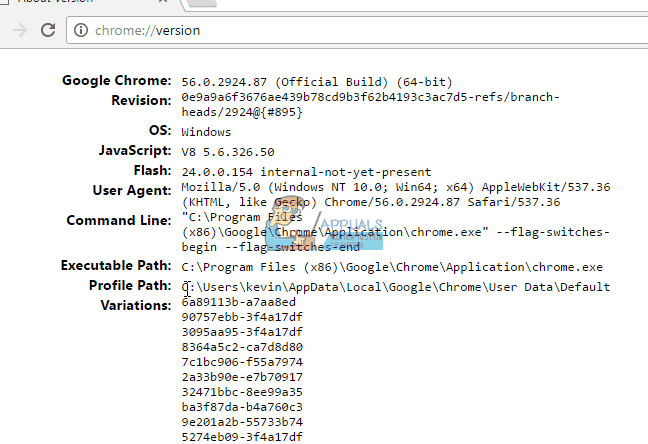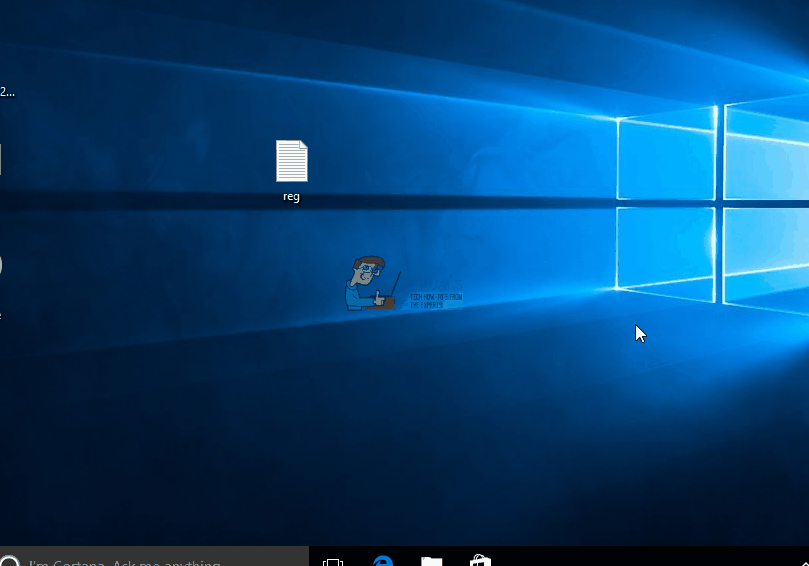Fix: Google Chrome Blank or White Pages
We all know that we need a web browser like Google Chrome for accessing the internet. But sometimes you might face the issue of “Blank Pages” in Google Chrome. Basically whenever you open the browser you might see a completely blank page (white screen) with either no address in the address bar or a “about:blank” written in the address bar. There are cases where your browser will work just fine until you open something related to google or Gmail. Only then a blank page will be shown to you. Sometimes you might only be able to go around the blank page issue from the private browsing option. The last scenario might be the case where the Blank Pages shows randomly on various websites like Facebook, blogs etc.
Just like there are many scenarios where you will be shown a blank page upon visiting a website, there are many reasons for this as well. Sometimes one of your extensions might be causing this issue. In some cases there might have been a corrupted History file that might be the reasons. In worst cases, all of this might be caused by a virus.
As there are many reasons for this to happen, we suggest you go through each method starting from method 1 and continue until your problem is solved.
Troubleshooting
The first thing to do is to clear the cache and cookies of the browser. Most of the time this solves your problem so try to clear the cache first and then start following the methods.
- Open Google Chrome
- Press CTRL, SHIFT and DELETE keys simultaneously (CTRL + SHIFT + DELETE)
- Check Browsing history, Cached images and files, Autofill form data and Cookies and other site and plugin data
- Select the option the beginning on time from the drop down list in the section “Obliterate the following items from”
- Click Clear browsing data

Method 1: Disabling Extensions
Disabling your extensions will help you figure out the issue. If disabling all the extensions solves this problem then that means one of your extensions were causing this issue. To check which one was the reason behind it, try to enable the extensions one by one.
- Open Google Chrome
- Click the 3 dots on the top right corner
- Click More Tools
- Select Extensions
- Now uncheck all the extensions by clicking where it says Enabled (with a tick mark)
Check if the issue is resolved or not.

Method 2: Disable Hardware Acceleration
Disabling Hardware Acceleration also solves the problem of blank pages so try to follow the given steps to disable it.
- Open Google Chrome
- Click the 3 dots on the top right corner
- Click Settings
- Scroll to the bottom of the page and click Show advanced settings…
- Uncheck the option Use hardware acceleration when possible under the section System

Method 3: Administrator rights
Sometimes running Chrome as administrator works as well. This isn’t really a solution but a workaround this problem until the problem is solved. It is useful especially if you can’t access any page in the browser.
Method 4: Changing the History folder
If the issue is because of the corrupt History folder of the Chrome browser then renaming the History folder will solve the issue.
- Open Google Chrome
- Type chrome://version in the Address Bar of the browser (the white box located on the top mid) and press Enter
- Look at the Profile Path. Select the address mentioned there and right click then select Copy
- Open Windows Explorer by holding Windows key and pressing E
- Move your mouse to the address bar of the Windows Explorer (the white box located on the top mid). Left click once (to bring the cursor there) then right click and select Paste. Press Enter
- Locate the folder named History.
- Right click History folder and select Rename
- Type tmp and press Enter
- Now relaunch Google Chrome

Method 5: Uninstall and Reinstall the browser
Uninstalling and reinstalling the software might solve the problem if the issue is because of the browser itself.
But before uninstalling, make sure the browser is closed.
- Press CTRL, ALT and DELETE keys simultaneously
- Select Task Manager (if it asks) to open the Task Manager.
- Now check to make sure your browser isn’t running. If you see your browser in the list then right click it and select End task.
Go here and download revouninstaller. It is a software that helps in removing a program completely from the PC. It removes the traces as well. In our case, we want the browser to be completely erased so that we can reinstall it. Download the software and install it. Now run the revouninstaller and select Google Chrome and uninstall it. Try to run the revouninstaller on Google Chrome multiple times to make sure you have uninstalled the browser completely.
Once done, reinstall the Google Chrome by re downloading the setup from the internet.
Method 6: Resizing the browser
In extreme cases, you might not be able to open any page in the browser including the browsers own page like settings etc. These pages will open just for a few seconds and then goes back to blank. In these scenarios, it’s really difficult to even change the settings especially if you don’t have another browser to work with.
A workaround of this problem is to resize the browser. Grab the lower right hand corner of the browser window and resize it to almost one half of its original size. Now the page will render normally and if you resize the browser back to its original size, it should work fine.
Method 7: Renaming files
- Hold Windows key and press E
- Type C:\Windows\Prefetch in your address bar (the white box located on the top mid) and press Enter
- Now locate the files named EXE-xxxxxxxx.pf (where xxxxxxxx stands for a random number like D999B1T0)
- Right click these files (there maybe more than one) and rename these to anything you want. To rename the files, right click on the file and select Rename. Now type whatever you want and press Enter.
Now relaunch the Google Chrome and it should solve the problem
If this doesn’t solve the problem, then try to steps given below
- Hold Windows key and press E
- Type C:\Program Files (x86)\Google\Chrome\Application in the address bar (the white box located on the top mid) and press Enter
- Right click the chrome.exe and select Rename
- Rename it to whatever you want like me.exe and press Enter
If both for the above mentioned tricks don’t work for you then try these steps:
- Locate the shortcut of the Google Chrome on the Desktop
- If you can’t find a shortcut then simply make a shortcut. To do this, right click the Google Chrome application icon and select Create Shortcut.
- Now right click the Google Chrome application shortcut and select Properties
- Click Shortcut tab
- Type “-no-sandbox” (with quotes) after the chrome.exe in the Target section. The name at the end should be like this “chrome.exe” “-no-sandbox”.
- Click Apply then Ok

Now run the chrome and it should work normally.
Note: This method is not safe and makes your computer vulnerable to security threats. So use it on your own risk.
Method 8: Check Compatibility
Sometimes the browsers application might be set to compatibility mode that maybe causing the issue. Removing the Run in Compatibility mode option solves this problem in that case.
- Right click the browser’s application
- Select Properties
- Click Compatibility tab
- Make sure the Run this program in compatibility mode for option is unchecked. It can be found under the Compatibility mode section
- Click Apply then Ok
Method 9: Deleting or Renaming Default Folder
- Hold Windows Key and press R
- Type %LOCALAPPDATA%\Google\Chrome\User Data\ in the address bar (the white box located on the top mid) and press Enter
- Delete or Rename the Default To do that, right click the Default folder and select Delete. If it asks for confirmation then select ok. Or right click the Default Folder and select Rename. Now type whatever you want and press Enter
- Open Google Chrome and It should work fine now. If you want to log on and bring back your old settings then click on the human icon on the top right corner and select Sign in to Chrome.
- Follow the on screen instructions to log in

Once you are logged in, your settings and everything should be back
If you have multiple profiles then repeat this process for all of the profiles.
Method 10: Scan the Computer
If the problem is because of a virus then there are two things that you can do. The first thing is to download, if you don’t have already, an antivirus and scan the computer for any viruses. You can also use the Malwarebytes to check your computer for any infections.
If that doesn’t solve your problem then performing a System Restore might solve the problem especially if the problem just started to show in the browser. Go here and follow the step by step guide to perform a system restore of your computer.





